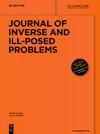Agent-based mathematical model of COVID-19 spread in Novosibirsk region: Identifiability, optimization and forecasting
IF 0.9
4区 数学
Q2 MATHEMATICS
引用次数: 3
Abstract
Abstract The problem of identification of unknown epidemiological parameters (contagiosity, the initial number of infected individuals, probability of being tested) of an agent-based model of COVID-19 spread in Novosibirsk region is solved and analyzed. The first stage of modeling involves data analysis based on the machine learning approach that allows one to determine correlated datasets of performed PCR tests and number of daily diagnoses and detect some features (seasonality, stationarity, data correlation) to be used for COVID-19 spread modeling. At the second stage, the unknown model parameters that depend on the date of introducing of containment measures are calibrated with the usage of additional measurements such as the number of daily diagnosed and tested people using PCR, their daily mortality rate and other statistical information about the disease. The calibration is based on minimization of the misfit function for daily diagnosed data. The OPTUNA optimization framework with tree-structured Parzen estimator and covariance matrix adaptation evolution strategy is used to minimize the misfit function. Due to ill-posedness of identification problem, the identifiability analysis is carried out to construct the regularization algorithm. At the third stage, the identified parameters of COVID-19 for Novosibirsk region and different scenarios of COVID-19 spread are analyzed in relation to introduced quarantine measures. This kind of modeling can be used to select effective anti-pandemic programs.基于agent的新西伯利亚地区COVID-19传播数学模型:可识别性、优化与预测
摘要解决并分析了基于代理的新冠肺炎在新西伯利亚地区传播模型的未知流行病学参数(传染率、感染者的初始数量、被检测的概率)的识别问题。建模的第一阶段涉及基于机器学习方法的数据分析,该方法允许确定已执行PCR检测的相关数据集和每日诊断的数量,并检测用于新冠肺炎传播建模的一些特征(季节性、平稳性、数据相关性)。在第二阶段,通过使用额外的测量值来校准取决于引入遏制措施日期的未知模型参数,例如使用PCR的每日诊断和检测人数、他们的每日死亡率和其他有关疾病的统计信息。校准基于每日诊断数据的缺火函数的最小化。采用具有树结构Parzen估计器和协方差矩阵自适应进化策略的OPTUNA优化框架来最小化失配函数。由于辨识问题的不适定性,进行了辨识性分析来构造正则化算法。在第三阶段,分析了新西伯利亚地区新冠肺炎的识别参数和新冠肺炎传播的不同情景与引入的隔离措施。这种模型可用于选择有效的抗疫方案。
本文章由计算机程序翻译,如有差异,请以英文原文为准。
求助全文
约1分钟内获得全文
求助全文
来源期刊

Journal of Inverse and Ill-Posed Problems
MATHEMATICS, APPLIED-MATHEMATICS
CiteScore
2.60
自引率
9.10%
发文量
48
审稿时长
>12 weeks
期刊介绍:
This journal aims to present original articles on the theory, numerics and applications of inverse and ill-posed problems. These inverse and ill-posed problems arise in mathematical physics and mathematical analysis, geophysics, acoustics, electrodynamics, tomography, medicine, ecology, financial mathematics etc. Articles on the construction and justification of new numerical algorithms of inverse problem solutions are also published.
Issues of the Journal of Inverse and Ill-Posed Problems contain high quality papers which have an innovative approach and topical interest.
The following topics are covered:
Inverse problems
existence and uniqueness theorems
stability estimates
optimization and identification problems
numerical methods
Ill-posed problems
regularization theory
operator equations
integral geometry
Applications
inverse problems in geophysics, electrodynamics and acoustics
inverse problems in ecology
inverse and ill-posed problems in medicine
mathematical problems of tomography
 求助内容:
求助内容: 应助结果提醒方式:
应助结果提醒方式:


